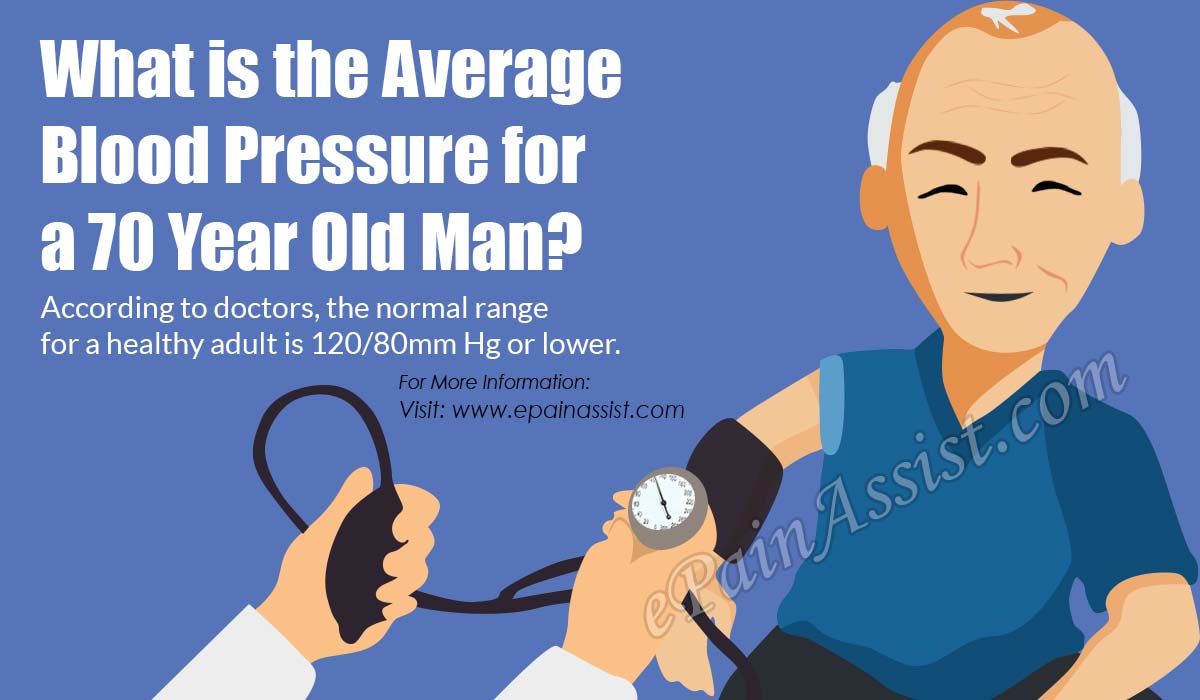There is an ongoing debate about how aggressively one should treat elevated high blood pressure in older adults, the fact that the pressure does not change with age and remains the same. For the healthy population, the blood pressure measurement is 120/80. While the top reading measures the systolic blood pressure, the bottom provides information about the diastolic pressure. Systolic pressure reading calculates the pressure when the heart is pumping blood, and diastolic reading offers the stress when the heart is at rest. When the numbers are lower, it indicates that the individual has lower chances of heart attacks or stroke.

What is the Average Blood Pressure for a 70 Year Old Man?
According to doctors, the normal range for a healthy adult is 120/80mm Hg or lower. However, elevated blood pressure is a silent killer, as it gradually increases with age without showing any symptoms. Therefore, it is essential for an individual to check blood pressure every year to keep a watch over the value. As an example, an individual in the age range of 60 and 64 will have 134/74mm Hg of blood pressure. It further escalates for a 70-year old man.
Although the average range for blood pressure for a 70-year old man is 120/80mm Hg, considering several factors, the doctors have decided to ease the guidelines and extend the same until 140/90. However, frequent visits and aggressive nature of the treatment is necessary.
High Blood Pressure
High blood pressure is reading stands at 140/90mm Hg. Anything between the standard value and the high blood pressure value falls into the category of prehypertension. An increase in high blood pressure value places an individual in a severe condition, as it leads to a series of health complications. The significant damage caused by elevated blood pressure is heart failure and stroke.
Doctors often disagree with providing a treatment to a person aged 70 years and suffering from high blood pressure. The reason is that the medicines used in treating the illness interact with other medications or treatment and puts the individual in a further risky position. Additionally, it leads to dizziness, shortness of breath, abnormal weight gain, increased palpitations, and swelling in abdomen, ankles, and feet. All these side effects increase the risk of falling, making it difficult for the very senior individual to live a healthy life.
Isolated Systolic Hypertension
According to reports and studies, about two-thirds of the population aged above 65 years in the developed countries suffers from systolic hypertension. It means that the top reading, the systolic pressure reaches to 140mm Hg or higher. The increase in systolic hypertension puts an individual at a higher risk than that of an increased diastolic pressure because systolic exerts excessive stress on the heart and leads to the development of heart diseases, failure, and stroke.
Treatment
According to recent changes suggested by an expert panel, it is preferable to begin treatment or uses drugs when the value reaches 150/90mm Hg. The guidelines prepared by the team also recommend that a person who is 60 and above with value between 140/90 and 150/90mm Hg can opt for additional steps other than medicines to reduce the value. These steps include lifestyle modifications, making changes to diet, and decrease in intake of salt. The same guidelines insist on following the course of action for those who are already under treatment with the value below 140/90mm Hg.
The Better Option
According to the American College of Cardiology, bringing the pressure below of 140/90mm Hg is preferable for 70 and above aged individuals. At the same moment, Dr. Elliot Antman of the American Heart Association stated that maintaining 140/90 until 75 years is reasonable and they are looking to ease the value to 150 for those who cross the age of 75 and above. However, the aggressiveness of the treatment changes according to the values and age.
Also Read:
- Breathing Exercise To Control High Blood Pressure
- Can High Blood Pressure Cause Nosebleeds?
- Ideal Blood Pressure for Men and Women
- Exercises to Lower Blood Pressure
- How to Know if Your Blood Pressure is High?
- Low Blood Pressure: 8 Foods That Can Help Fight Hypotension
- How Can We Control Our High Blood Pressure?
